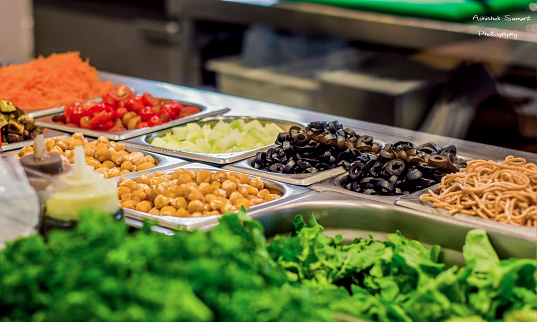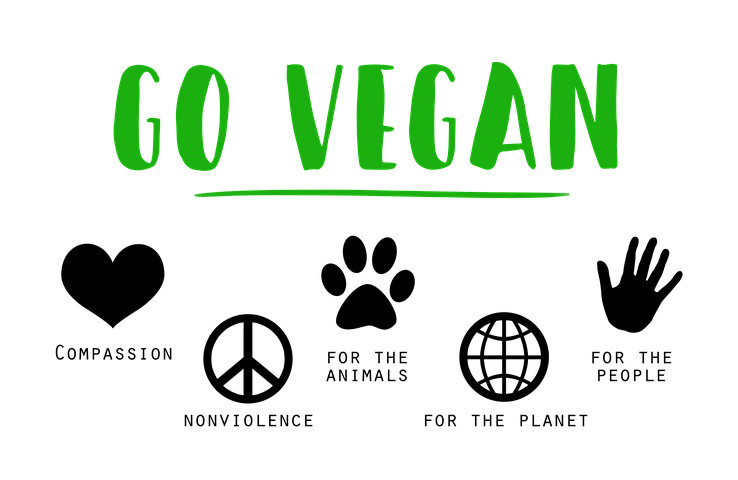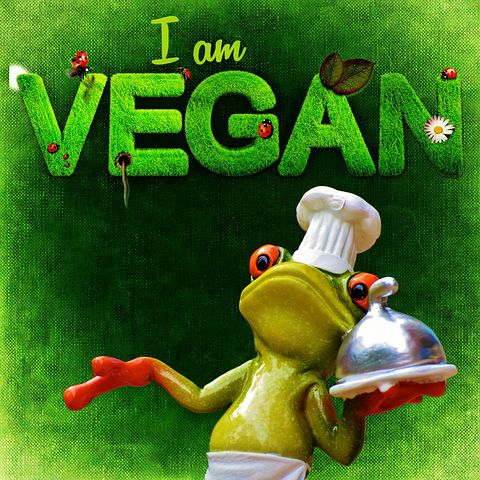Have you decided to become a vegan? Whether your reason was for animal kindness, better health, or both, it’s a life-altering choice. It also requires several steps as you gradually adapt the vegan lifestyle.
Before you dive into uncharted waters, research as much as you can about veganism, so it becomes familiar to you. Your research can help you feel more secure and prepared as you begin to change how you eat and live. As with any significant change, your learning curve will take time and patience.
What does being a vegan mean to you? According to an article published by the American Diet Association, at least 2.5 percent of Americans identify with veganism. The percentage is nearly double in Canada, per the report.

Committing to Eating Vegan
One of the best ways to learn more about veganism is to do some research or follow reliable vegan news blogs online. Your local library probably has several books, journals, and magazines devoted to the subject.
The internet is a treasure trove of documentaries, forums, and websites that can offer valuable information. Plus, you can connect with experienced vegans who can give you helpful tips and real-life advice.
An article published by Nutrients states that a vegan diet may be beneficial to your health. It may have some promising benefits of reducing the risks of certain diseases like cancer, high blood pressure, and type II diabetes, per the article. However, the authors concede that more research is needed.
Your research can be your guide to reading food labels. You may be amazed when you find that many unsuspecting foods have ingredients derived from animals. Also, you’ll discover new and exciting vegan-friendly foods at your local supermarket and some area restaurants.
Tips and Tricks to Help You Transition to a Vegan Lifestyle
Avoid making the mistake of going “cold turkey “from meat and other nonvegan foods. The good news is that many of your favorite foods may already be vegan. These foods are sometimes called “accidental” vegan. If you’re currently a vegetarian, you’re probably familiar with many tasty vegetables and protein alternatives, and you already use them in your diet.
Introducing New Foods
Healthy foods such as tofu, legumes, seeds, nuts, and whole grains may be staples in your pantry. If not, these delicious foods are an ideal way to bring more vegan foods into your diet. Think of it as adding to your food list at the beginning rather than a sudden elimination.

• Be Creative
Search vegan cookbooks and websites for delicious recipes that you can try. Most are quick, simple, and will often appeal to children, too. Experiment with vegan recipes so you can easily add them to your menu plans.
• Make the Dairy Switch
Soon, you’ll feel confident enough to make some other elementary moves into a vegan lifestyle. One of the simplest changes that many novice vegans make is to trade dairy products for vegan alternatives. There are countless substitution options for some of your favorite dairy products.
First, margarine has been an acceptable butter substitute for decades. Soy and other plant-based “milk” products have also flooded the vegan market. Do some taste tests to find out which works the best for you.
• Stay Motivated
As you learn more about becoming vegan, you’ll see that it’s much more than just abstaining from eating meat or being on a diet. When you’re on a “diet,” giving in to cravings is common. However, veganism is a dedicated lifestyle based on your convictions and principles, so cheating isn’t as easy.
The heart of the vegan lifestyle is what made you want to change in the first place. You consider how your health, the environment, and other living beings are affected by consuming animal products. Once this realization has become part of your thinking and inner being, it’s a commitment that’s not quickly forgotten.
Allow these fundamental realizations to be your motivation. When you see an improvement in your overall health, it boosts your commitment. Knowing that you aren’t partaking in the suffering and death of the living beings makes your decision worthwhile. Being kind to the environment and seeing the results only strengthens your resolve.
• Accentuate the Positive
The way you view your food options can be a positive or a negative influence. Instead of pining over the foods you’ll gradually omit, concentrate on the tasty options you’ll add to your menu. You probably enjoy many foods that are already vegan-friendly.
Try to be enthusiastic about discovering new dishes and converting old favorites into vegan ones. Many world cuisines have naturally vegan dishes that you may have never tried. Think of your vegan lifestyle as a thrilling adventure into global foods and innovative recipe changes.

5 Adjustments To Make Going Vegan
Are you ready to transition from your current situation to a vegan way of life? You can be even more successful if you do it gradually. Here are five adjustments to make, depending on where you’re starting.
1. Moving from Vegetarian to Vegan
Some people assume that vegetarians and vegans are the same. While neither lifestyle consumes meat, there is a marked difference. Not only do vegans abstain from meat, but they also don’t drink any animal products, like milk, eggs, or honey.
Most vegans also will not wear clothes made from animals, such as leather or silk, nor use products with animal ingredients. If you are already a vegetarian, you’ve got the no-meat consumption down pat. Now, you can start weaning yourself from animal products like eggs, dairy, and honey.
Learn how to replace these with plant-based proteins and dairy alternatives. It’s easier if you omit one food group at a time. Once you taste “milk” made from pureed almonds, rice, or oats, you probably won’t miss cow’s milk at all.
You can also blend powdered flaxseed with a bit of water to make an excellent substitute for eggs in many baked goods.
2. Starting from an Omnivore
Perhaps this is one of the most challenging transitions into a vegan lifestyle. As an omnivore, you’ve spent this much of your life consuming meat and using other animal products. Your determination will get you used to the vegan-friendly lifestyle you’ve chosen.
First, eliminate the animal products that are the easiest. These may include processed meats and fresh meats you occasionally ate. Start adding more whole grains and vegetables to your diet.
Avoid replacing meat with a lot of eggs and carbohydrates because an overload can be unhealthy. Carefully read food labels when you’re shopping. Some standard products have trace animal ingredients that you’d never suspect.
As you eliminate these, you can begin avoiding the main meat products like beef, pork, seafood, etc.
3. Going Totally Vegan
As you transition from a vegetarian or omnivore to a vegan lifestyle, be compassionate and patient with yourself. Nobody changes their diet and lifestyle at the same rate. The more familiar and comfortable you are with consuming a plant-based diet, the more natural veganism will become for you.
In the beginning, you may rely on commercial vegan foods. The impressive array of vegan meat substitutes and non-dairy options can help ease your way into the lifestyle. However, they are usually quite pricey and highly processed, which are two things you want to avoid.
You will eventually find ways to use veggies, legumes, nuts, and fruit to quench your craving for meat. Plus, you’ll learn how to make your veggie burgers and other treats that will keep you on track.
4. Dealing with Your Cravings
It’s normal to have favorite foods and crave them often. For some, it may be sweets, while others may crave starchy foods. When you eliminate them gradually, you will miss them less.
Maybe you have avoided the vegan lifestyle because you were concerned that you could never give up certain foods. During your transition process, save your trigger foods for last. Eventually, bring in other options so your cravings won’t be as intense.
Have you ever heard the old saying that once you see something made, you may not eat it again? If you’re having difficulties giving up meat products, do some research on how the animals are slaughtered and how the products are made. It may be enough to quench your cravings forever.
5. Cultivating a Vegan-Friendly Style and Home
Veganism goes beyond the food you eat. It takes a while to weed out animal-based products from your home and wardrobe. Fortunately, there are kinder alternatives to leather, wool, and silk. Many cosmetics and other home goods have animal products listed by other names.
If you are unsure if any products you use at home or work are vegan-friendly, you can always research them online. Fortunately, the demand for kinder products has made manufacturers develop more options. More household and fashion stores are catering to vegan crowds than in the past.

Final Thoughts on Transitioning to a Vegan Lifestyle
Even if you reduce your consumption of animal products, you are making strides in the right direction. Expect to make mistakes and learn from them instead of being discouraged. Creating a kinder lifestyle takes one day at a time, and you can feel good about your progress.
Originally Published: www.powerofpositivity.com

















